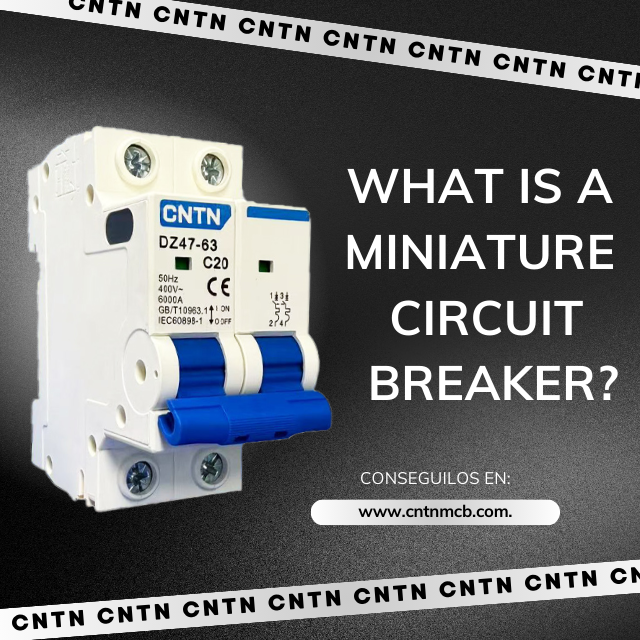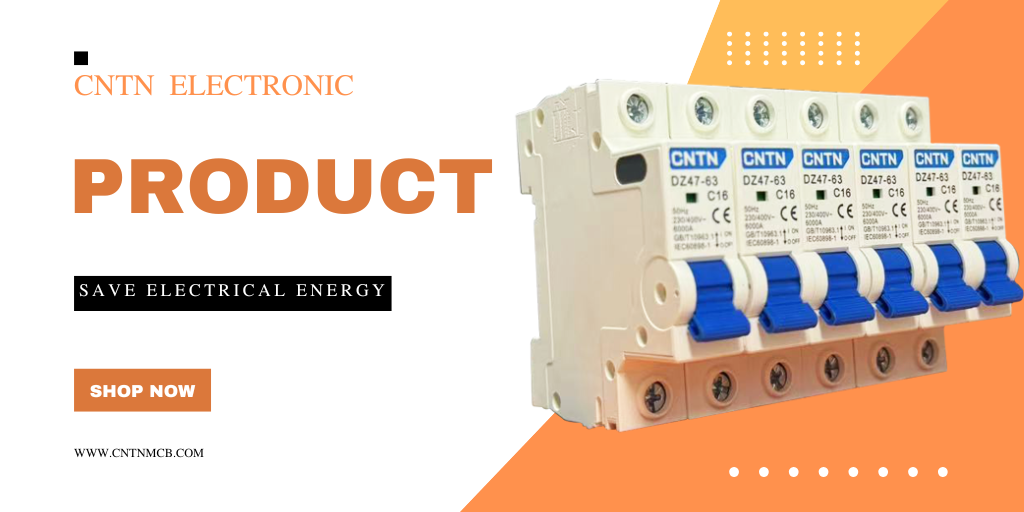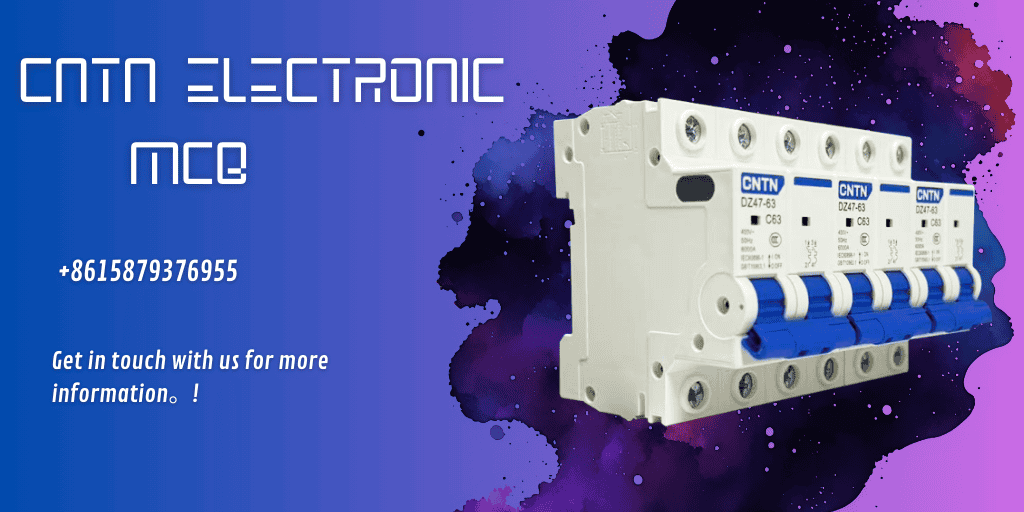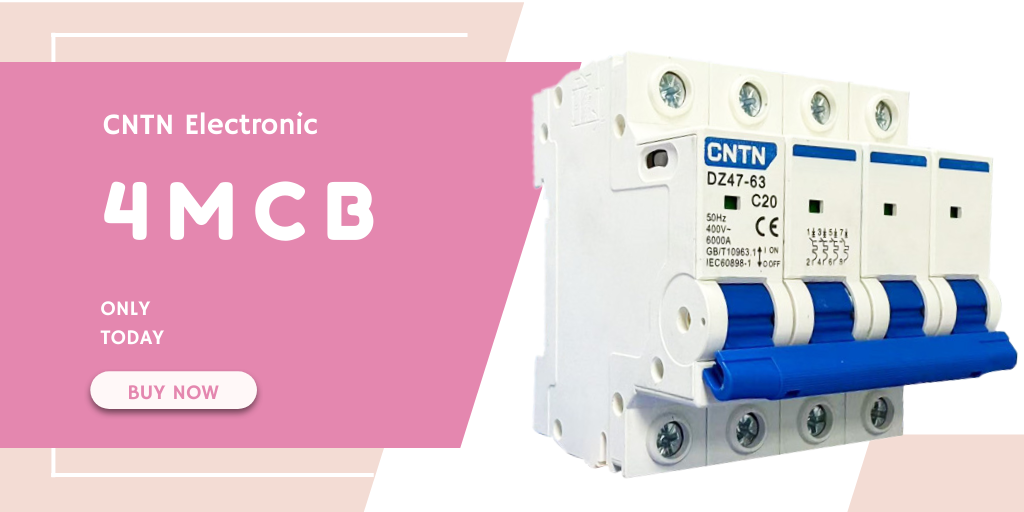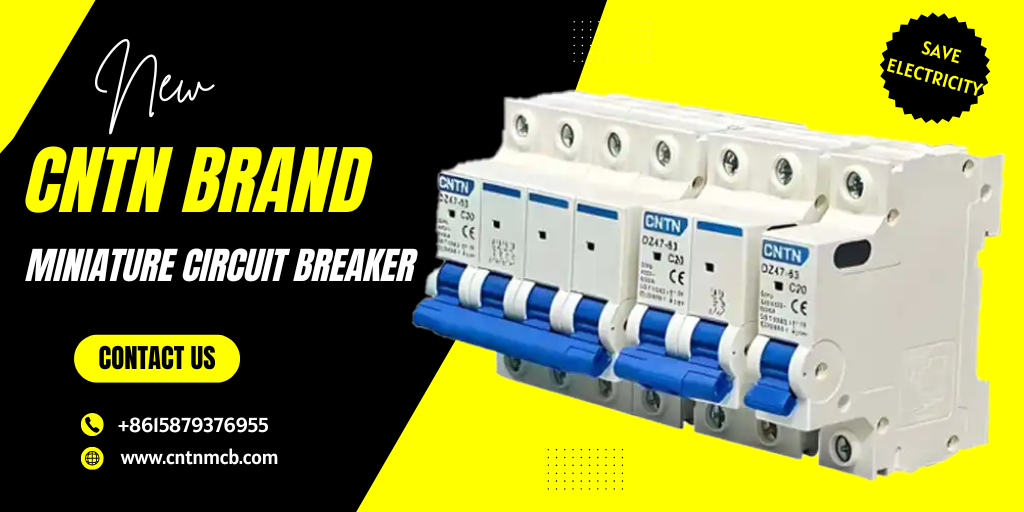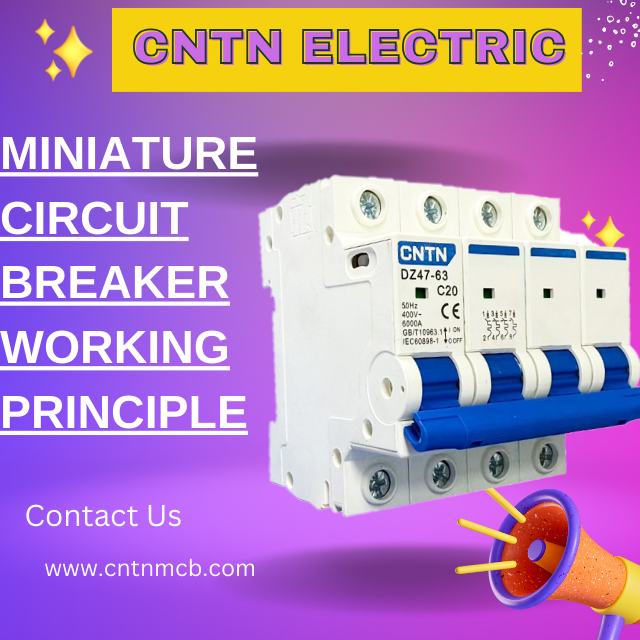Miniature circuit breakers (MCBs) are core protection and control components in low-voltage power distribution systems.
When faults such as overload or short circuit occur in the circuit, they automatically cut off the power supply to prevent equipment damage or safety accidents like fires.
Next, I will provide a detailed description of the components, type differences, and application scenarios of the miniature circuit breakers.
Now let’s get it started!
Composition of miniature circuit breakers
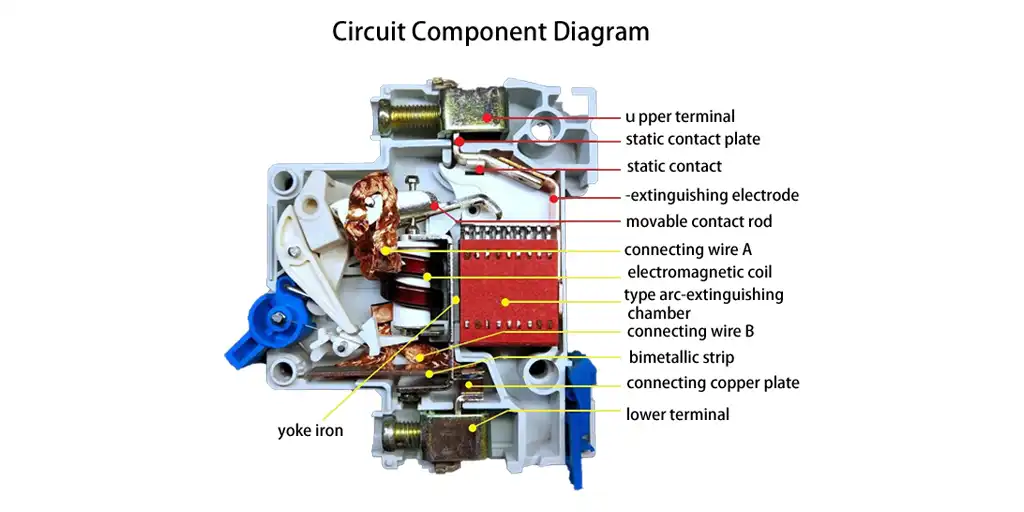
A miniature circuit breaker (MCB) consists of a tripper, contacts, an arc-extinguishing chamber, an operating mechanism, and a housing.
Among these components, the CNTN brand miniature circuit breaker housing and the arc-extinguishing chamber are made of flame-retardant materials.
The tripper is the core executive component that enables “fault tripping”, following the process of “detecting faults (abnormal current) → triggering action (pushing for tripping) → cutting off the circuit (achieving protection)”.
The arc-extinguishing chamber is the core component that “extinguishes electric arcs” when fault currents are cut off.
It can quickly extinguish the electric arcs generated when contacts separate, avoiding arc hazards and ensuring the circuit breaker cuts off the circuit safely and reliably.
The operating mechanism is the core transmission component connecting “external operation” and “internal circuit on-off control”. It can not only realize “manual operation” to control the circuit on-off but also respond to the “tripper signal” to achieve automatic tripping.
To put it simply, if we compare a miniature circuit breaker (MCB) to an “electrical safety guard”, then:
- The tripper is its “eyes” (for detecting faults);
- The arc-extinguishing chamber is its “fire extinguisher” (for eliminating arc hazards);
- The operating mechanism is its “hands and feet” (for performing actions such as “closing to supply power”, “opening to cut off power”, and “tripping in case of faults”).
Types of miniature circuit breakers
Miniature circuit breakers are classified into 1P, 2P, 3P, and 4P types based on the number of conductive circuits they are connected to (i.e., the number of control circuits for live wires/neutral wires/phase wires).
Below is a detailed overview of the differentiation of the pole counts of miniature circuit breakers.
What is a 1P miniatuer circuit breaker?
A 1P miniature circuit breaker provides overload/short-circuit protection for the current in the live wire.
It provides overcurrent/short-circuit protection for the live wire but does not control the neutral wire, which needs to be connected to a separate terminal.
It has the smallest size and the lowest cost; however, it cannot cut off the circuit in case of a neutral wire fault (such as neutral wire short circuit), resulting in relatively low safety.
It is suitable for circuits of low-power appliances in households (e.g., lighting circuits).
CNTN Electric is capable of producing high quality 1P miniature circuit breakers with amperages ranging from 6A to 63A.
What Is A 2P Miniature Circuit Breaker?
A 2P miniature circuit breaker controls both the live wire (L) and the neutral wire (N).
Both the live wire and neutral wire are protected against overcurrent/short-circuit and are disconnected simultaneously.
With both circuits controlled and protected, it has a medium size.
It provides the most comprehensive protection in single-phase circuits, preventing overload for both the live wire and neutral wire.
As a high-safety option for single-phase circuits, 2P miniature circuit breakers are suitable for high-power devices with high safety requirements in single-phase circuits (e.g., household wall-mounted air conditioners, electric water heaters, electric ovens, and main household incoming switches).
CNTN Electric is capable of producing high quality 2P miniature circuit breakers with amperages ranging from 6A to 63A.
What Is A 3P miniature Circuit Breaker?
The 3P miniature circuit breaker controls three-phase live wires (L1, L2, L3).
All three-phase live wires are protected against overcurrent/short-circuit and are disconnected simultaneously, but it does not control the neutral wire (which needs to be handled separately).
It has a relatively large size, is compatible with three-phase three-wire circuits, and only protects the three-phase live wires.
It is suitable for three-phase power-driven equipment without a neutral wire (e.g., water pumps, three-phase electric welders, and external units of three-phase air conditioners).
CNTN Electric is capable of producing high quality 3P miniature circuit breakers with amperages ranging from 6A to 63A.
What Is A 4P miniatureCircuit Breaker?
A 4P miniature circuit breaker controls three-phase live wires (L1, L2, L3) and the neutral wire (N).
All three-phase live wires and the neutral wire are protected and disconnected simultaneously.
With four circuits controlled and protected, it has the largest size and provides the most comprehensive protection in three-phase four-wire circuits, preventing overload for both live wires and the neutral wire.
It is suitable for three-phase four-wire circuits with a neutral wire or scenarios requiring high neutral wire protection (e.g., main incoming switches of three-phase four-wire systems in commercial buildings or villas, medical facilities, and data centers).
CNTN Electric is capable of producing high quality 4P miniature circuit breakers with amperages ranging from 6A to 63A.
Installation & Maintenance Of MCBs
The installation environment of a miniature circuit breaker (MCB) directly affects its protective performance, service life, and user safety.
Therefore, it must be installed in strict compliance with the principle of adapting to environmental conditions and avoiding risk factors.
1. Temperature requirements: The standard operating temperature for civil/industrial-grade miniature circuit breakers is -5℃ to +40℃. Some temperature-resistant enhanced products can be used in an extended range of -25℃ to +60℃ (suitable for cold regions or high-temperature workshops).
2. Humidity requirements: At normal temperature (20℃ to 30℃): relative humidity shall be ≤85% (no condensation);
In high-temperature and high-humidity conditions (such as the plum rain season in southern China): it shall meet the requirement of “relative humidity ≤90% at 40℃” (with no condensation). Some high humidity-resistant products can withstand short-term 95% humidity.
3. Altitude requirements: Ordinary miniature circuit breakers are suitable for environments with an altitude of ≤2000m. High-altitude dedicated circuit breakers can be used in altitudes ranging from 2000m to 4000m (such as plateau areas).
4. Dust environment requirements: Ordinary circuit breakers are suitable for clean environments without significant dust. If installed in a dusty workshop, additional “sealed-type circuit breakers” should be installed or dust-proof sealing treatment should be done inside the distribution box.
5. It is prohibited to install ordinary circuit breakers in environments with corrosive gases (such as kitchens, chemical workshops, and seaside areas).
6.Installation space requirements: A heat dissipation gap of at least 10mm shall be reserved above, below, and on both sides of the circuit breaker. A space of ≥50mm shall be reserved in front of the operating handle (closing/opening button) of the circuit breaker to facilitate manual operation and avoid being blocked by other components.
7.Sufficient space (≥20mm) shall be reserved behind the incoming and outgoing terminals of the circuit breaker to facilitate wire bending and routing, preventing insulation layer damage caused by excessive wire bending
Conclusion
Simply put, as the “safety guard” of the low-voltage power distribution system, miniature circuit breakers can provide power safety protection from home lighting to industrial power applications, from general environments to special scenarios.
Scientific installation and maintenance enable miniature circuit breakers to perform their protective functions stably over the long term.
Only by selecting the right model, installing it in a suitable environment, and conducting proper maintenance can miniature circuit breakers truly become the “first line of defense” for circuit safety, building a solid safety barrier for household, commercial, and industrial electricity use.
CNTN® is committed to manufacturing miniature circuit breakers. Please feel free to contact us if you have any requirements.
